Lugares de interés (POIs) del Mapa
0: 71-73 BCE --Spartacus and Third Servile War
 "Spartacus, the famous leader of the third major slave revolt in southern Italy and Sicily was a Thracian. Trained as a swordsman at a school for gladiators, Spartacus led from 73 to 71 B.C.E. a slave army that grew to seventy thousand. The Romans finally crushed the rebellion and crucified Spartacus and some six thousand other survivors. Thus along with the precedent and sanction for slave plantation agriculture, the Roman era also passed on a heroic precedent for slave resistance (even if the lesson, confirmed scores of times in the New World, was that slave revolts are suicidal)."
"Spartacus, the famous leader of the third major slave revolt in southern Italy and Sicily was a Thracian. Trained as a swordsman at a school for gladiators, Spartacus led from 73 to 71 B.C.E. a slave army that grew to seventy thousand. The Romans finally crushed the rebellion and crucified Spartacus and some six thousand other survivors. Thus along with the precedent and sanction for slave plantation agriculture, the Roman era also passed on a heroic precedent for slave resistance (even if the lesson, confirmed scores of times in the New World, was that slave revolts are suicidal)."
David Brion Davis, Inhuman Bondage: The Rise and Fall of Slavery in the New World (New York: Oxford University Press, 2006), 47.
Más sobre 71-73 BCE --Spartacus and Third Servile War
1: 1444 - Gomes Eannes de Zurara Observes the Slave Trade
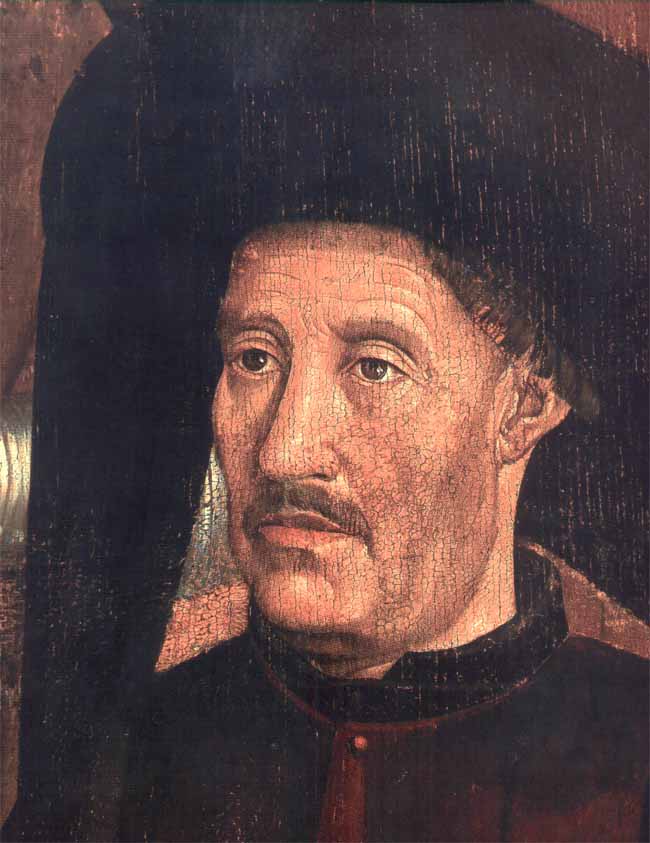 "...Gomes Eannes de Zurara, the official chronicler for the Portuguese king [...] in his 1453 account of the earlier Portuguese 'discovery' and conquest of Guinea [described] the arrival and sale in Portugal of the first group of captured African slaves[:] 'And here you must note that these blacks [...] were nonetheless slaves of [the Moors] by ancient custom...The descendants [of Cam, son of Noah,] should be subject to all other peoples of the world...'"
"...Gomes Eannes de Zurara, the official chronicler for the Portuguese king [...] in his 1453 account of the earlier Portuguese 'discovery' and conquest of Guinea [described] the arrival and sale in Portugal of the first group of captured African slaves[:] 'And here you must note that these blacks [...] were nonetheless slaves of [the Moors] by ancient custom...The descendants [of Cam, son of Noah,] should be subject to all other peoples of the world...'"
Más sobre 1444 - Gomes Eannes de Zurara Observes the Slave Trade
2: 1518 - Bartolomé de las Casas on Slavery
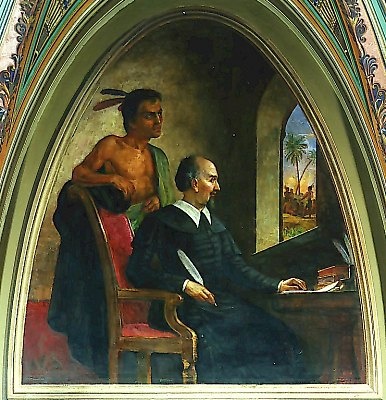 “By 1516 and 1518, when Bartolomé de Las Casas called forthe massive importation of African slaves into the New World, to spare theIndians from the kind of annihilation he was already viewing, antiblack raciststereotypes had already become embedded in Iberian societies, where large numbersof African slaves had already been transported, usually to engage in thelowliest and least desirable kinds of work.”
“By 1516 and 1518, when Bartolomé de Las Casas called forthe massive importation of African slaves into the New World, to spare theIndians from the kind of annihilation he was already viewing, antiblack raciststereotypes had already become embedded in Iberian societies, where large numbersof African slaves had already been transported, usually to engage in thelowliest and least desirable kinds of work.”
David Brion Davis, Inhuman Bondage: The Rise and Fall of Slavery in the New World (New York: Oxford University Press, 2006), 73.
The Zinn Education Project provides three video recordings of Bartolomé de las Casas' writings on the native peoples of the New World.
Professor Lawrence A. Clayton of Tulane University shared an audio slideshow lecture on Las Casas and his views of slavery.
Image Credit: "Chronicler, Bartolomé de las Casas," courtesy of The Zinn Education Project, http://zinnedproject.org/posts/11250
Más sobre 1518 - Bartolomé de las Casas on Slavery
3: 1542-Spain Outlaws Enslavement of Native Americans
 "Spain's famous New Laws of 1542, influenced by [Bartolome de] Las Casas, sought in various ways to protect the Indians' rights, allowing them to own property, for example, and forbidding the Spaniards from working them in mines. These and other reforms were difficult if not impossible to enforce, but over a period of three centuries the Spanish and Portuguese created a vast body of legislation intended to segregate and protect Native Americans from the exploitive forces of colonization."
"Spain's famous New Laws of 1542, influenced by [Bartolome de] Las Casas, sought in various ways to protect the Indians' rights, allowing them to own property, for example, and forbidding the Spaniards from working them in mines. These and other reforms were difficult if not impossible to enforce, but over a period of three centuries the Spanish and Portuguese created a vast body of legislation intended to segregate and protect Native Americans from the exploitive forces of colonization."
Más sobre 1542-Spain Outlaws Enslavement of Native Americans
4: 1688 - Quakers Sign Antislavery Petition
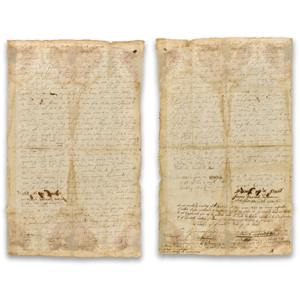 "In 1688 at a time when English and American Quakers were becoming increasingly involved as the owners and traders of slaves in the Atlantic Slave System, four Dutch-speaking Quaker immigrants in Germantown, Pennsylvania, signed and sent a strongly worded antislavery petition to their local Quaker Monthly Meeting...The Germantown Quakers condemned the purchase of African slaves as the equivalent of purchasing stolen goods and asserted that the blacks had a perfect right to liberty since slaveholding was based on sheer physical force and thus violated divine law."
"In 1688 at a time when English and American Quakers were becoming increasingly involved as the owners and traders of slaves in the Atlantic Slave System, four Dutch-speaking Quaker immigrants in Germantown, Pennsylvania, signed and sent a strongly worded antislavery petition to their local Quaker Monthly Meeting...The Germantown Quakers condemned the purchase of African slaves as the equivalent of purchasing stolen goods and asserted that the blacks had a perfect right to liberty since slaveholding was based on sheer physical force and thus violated divine law."
Más sobre 1688 - Quakers Sign Antislavery Petition
5: 1712-Slave Uprising in New York City
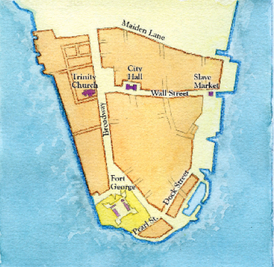 "A large cultural gap separated the many acculturated or semiacculturated slaves...from the slaves who after 1712 began arriving in increasing numbers directly from Africa. Yet the white decision to import more Africans and to reduce the number of slaves, especially...from the tumultuous West Indies was in part a response to the threat of slave unity and violent resistance signified by the New York conspiracies of 1712 and 1741."
"A large cultural gap separated the many acculturated or semiacculturated slaves...from the slaves who after 1712 began arriving in increasing numbers directly from Africa. Yet the white decision to import more Africans and to reduce the number of slaves, especially...from the tumultuous West Indies was in part a response to the threat of slave unity and violent resistance signified by the New York conspiracies of 1712 and 1741."
David Brion Davis, Inhuman Bondage: The Rise and Fall of Slavery in the New World(New York: Oxford University Press, 2006), 129-130.
Image Credit: "Map of Manhattan 1712" courtesy of http://maap.columbia.edu/content/places/1712_slave_revolt/images/274/MAAP_SlaveRevoltNEW_Then_274.jpg
Más sobre 1712-Slave Uprising in New York City
6: 1739 --Stono Rebellion
Más sobre 1739 --Stono Rebellion
7: 1772-The Somerset Case Decision Outlaws Slavery In England
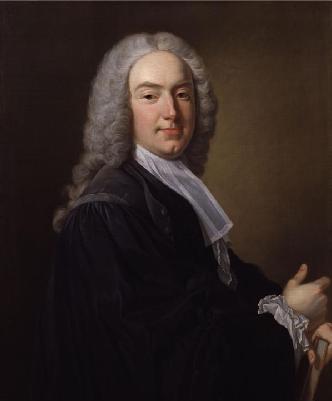 "In 1772, as England's conflict with its North American colonies advanced, Granville Sharp, England's pioneering abolitionist, won in court the much-publicized Somerset case, which was popularly interpreted, in America as well as Britain, as outlawing slavery in England."
"In 1772, as England's conflict with its North American colonies advanced, Granville Sharp, England's pioneering abolitionist, won in court the much-publicized Somerset case, which was popularly interpreted, in America as well as Britain, as outlawing slavery in England."David Brion Davis, Inhuman Bondage: The Rise and Fall of Slavery in the New World (New York: Oxford University Press, 2006), 234.
William Murray, 1st Earl of Mansfield, was Lord Chief Justice at the time of the Somerset Case. Here is the transcript of the case including his official decision.
Más sobre 1772-The Somerset Case Decision Outlaws Slavery In England
8: 1777 - Vermont Outlaws Slavery
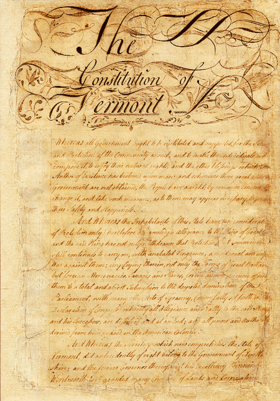 "The American Revolution had the effect of committing the Northern states to eventual emancipation and thus to the beginning of an ominous division of 'sections': slaveholding versus free soil...'Free soil' regions meant something different in the United States since states were contiguous and not separated by thousands of miles of sea. In 1777, early in the war, Vermont became the first region in the New World to outlaw slavery, in this instance by constitutional mandate."
"The American Revolution had the effect of committing the Northern states to eventual emancipation and thus to the beginning of an ominous division of 'sections': slaveholding versus free soil...'Free soil' regions meant something different in the United States since states were contiguous and not separated by thousands of miles of sea. In 1777, early in the war, Vermont became the first region in the New World to outlaw slavery, in this instance by constitutional mandate."
Más sobre 1777 - Vermont Outlaws Slavery
9: 1779-South Carolina Legislature Rejects Arming Slaves
 "Despite the continuing lobbying of Henry Laurens's idealistic son, the South Carolina legislature kept rejecting the proposal [to arm three thousand slave troops], subordinating military needs to the protection of the slave system. Despite the precedents of arming slaves in early colonial times, for many of the Carolinians defeat and a return to British rule were preferable to a dependence on African or African American soldiers."
"Despite the continuing lobbying of Henry Laurens's idealistic son, the South Carolina legislature kept rejecting the proposal [to arm three thousand slave troops], subordinating military needs to the protection of the slave system. Despite the precedents of arming slaves in early colonial times, for many of the Carolinians defeat and a return to British rule were preferable to a dependence on African or African American soldiers."David Brion Davis, Inhuman Bondage: The Rise and Fall of Slavery in the New World (New York: Oxford University Press, 2006), 148.
Más sobre 1779-South Carolina Legislature Rejects Arming Slaves
10: 1787-Establishment of the Society for Effecting the Abolition of the Slave Trade
"A growing moral concern over the Atlantic Slave System and its creator and sustainer, the slave trade from Africa, led in 1787 to the formation of England's Society for Effecting the Abolition of the Slave Trade...This pioneer organization was really an extention of the quaker committees, now enlarge to include a few Anglicans like [Granville] Sharp and Thomas Clarkson..."
David Brion Davis, Inhuman Bondage: The Rise and Fall of Slavery in the New World(New York: Oxford University Press, 2006),234-235.
Image Credit: "Am I Not a Man and a Brother?" by Josiah Wedgwood, courtesy of http://upload.wikimedia.org/wikipedia/commons/5/5e/BLAKE10.JPG
Más sobre 1787-Establishment of the Society for Effecting the Abolition of the Slave Trade
11: 1788 - Establishment of Société des Amis des Noirs
 "At the start of the French Revolution , free coloreds, especially in France, were greatly encouraged by the Declaration of the Rights of Man and the egalitarian rhetoric of 1789. A group of mulattoes, led by Julien Raimond, a distinguished Parisian lawyer, appeared before the bar of the Constituent Assembly in October, petitioning to be seated as West Indian deputies. Their cause of racial equality became unintentionally fused with antislavery when they received strong support from the elite white Amis des Noirs."
"At the start of the French Revolution , free coloreds, especially in France, were greatly encouraged by the Declaration of the Rights of Man and the egalitarian rhetoric of 1789. A group of mulattoes, led by Julien Raimond, a distinguished Parisian lawyer, appeared before the bar of the Constituent Assembly in October, petitioning to be seated as West Indian deputies. Their cause of racial equality became unintentionally fused with antislavery when they received strong support from the elite white Amis des Noirs."
Más sobre 1788 - Establishment of Société des Amis des Noirs
12: 1788 - British Abolitionists Organize Petition Campaign
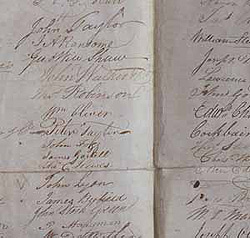 “…The year 1788 marked the first national petition campaign to end the slave trade. In the booming industrial town of Manchester, in December 1787, 10,639 men, a significant proportion of Manchester’s eligible males, signed a petition against the slave trade, and women constituted 10 percent of the subscribers or contributors to the national campaign…There were far more petitions for the abolition causes than for any other issue.”
“…The year 1788 marked the first national petition campaign to end the slave trade. In the booming industrial town of Manchester, in December 1787, 10,639 men, a significant proportion of Manchester’s eligible males, signed a petition against the slave trade, and women constituted 10 percent of the subscribers or contributors to the national campaign…There were far more petitions for the abolition causes than for any other issue.”
Más sobre 1788 - British Abolitionists Organize Petition Campaign
13: 1790-Vincent Oge Leads Mulatto Uprising in Saint Domingue
 "Then, in 1790, one of the mulatto leaders in France, Vincent Oge, received funds from British abolitionists before sailing to the United States, where he obtained arms. After finally landing in Saint-Domingue, he demanded elections and suffrage for all free males, on the basis of existing French law. Oge and his followers professed full support for the slave system, but the soon became involved in an armed rebellion, which French officials crushed."
"Then, in 1790, one of the mulatto leaders in France, Vincent Oge, received funds from British abolitionists before sailing to the United States, where he obtained arms. After finally landing in Saint-Domingue, he demanded elections and suffrage for all free males, on the basis of existing French law. Oge and his followers professed full support for the slave system, but the soon became involved in an armed rebellion, which French officials crushed."
Más sobre 1790-Vincent Oge Leads Mulatto Uprising in Saint Domingue
14: 1800 - Gabriel's Slave Rebellion
 "...A slave named Gabriel [...] and his fellow leaders [mobilized] large numbers of slave artisans and mechanics in towns from the coast to the piedmont, Gabriel's lieutenants might well have captured Richmond, Virginia, and taken Governor James Monroe hostage if a violent thunderstorm had not prevented a planned rendezvous and induced several house slaves to reveal the plot to the authorities. While this event traumatized Virginia's leaders and much of the slaveholding South, one should not minimize the fact that 'loyal' slave informers prevented any whites from being killed or harmed, won freedom as their reward, and ensured that many other slaves (at least twenty-seven) would be hanged."
"...A slave named Gabriel [...] and his fellow leaders [mobilized] large numbers of slave artisans and mechanics in towns from the coast to the piedmont, Gabriel's lieutenants might well have captured Richmond, Virginia, and taken Governor James Monroe hostage if a violent thunderstorm had not prevented a planned rendezvous and induced several house slaves to reveal the plot to the authorities. While this event traumatized Virginia's leaders and much of the slaveholding South, one should not minimize the fact that 'loyal' slave informers prevented any whites from being killed or harmed, won freedom as their reward, and ensured that many other slaves (at least twenty-seven) would be hanged."
Más sobre 1800 - Gabriel's Slave Rebellion
15: 1816 - The American Colonization Society Formed
 "The context had entirely changed by 1816, when the American Colonization Society (ACS) was formed. By then the vast majority of slaves had been born in the United States, and many had American ancestors stretching back for well over a century. Yet in the aftermath of the Haitian Revolution and the Gabriel slave conspiracy in Virginia, even whites who were genuinely abolitionist saw the colonization of freed slaves as 'the safe and sane approach' to the problems of slavery and racial prejudice...Here is the basic argument put forth by the colonizationists: Racial prejudice and racial differences were simply too strong in the United States for whites and blacks to live together as equals."
"The context had entirely changed by 1816, when the American Colonization Society (ACS) was formed. By then the vast majority of slaves had been born in the United States, and many had American ancestors stretching back for well over a century. Yet in the aftermath of the Haitian Revolution and the Gabriel slave conspiracy in Virginia, even whites who were genuinely abolitionist saw the colonization of freed slaves as 'the safe and sane approach' to the problems of slavery and racial prejudice...Here is the basic argument put forth by the colonizationists: Racial prejudice and racial differences were simply too strong in the United States for whites and blacks to live together as equals."
Más sobre 1816 - The American Colonization Society Formed
16: 1816 --Slave Rebellion in British Barbados
“Evidence indicates careful planning for the start of a major uprisingon the evening of Easter Sunday, April 14, 1816. Later named for Bussa, and African slave and chief ranger onthe Bayley plantation, the rebellion quickly spread to the island’s seventylargest estates, leaving great houses and many can fields aflame. Rebels even seized an armory near St.Phillip’s Church before the militia could defend it.”
David Brion Davis, InhumanBondage: The Rise and Fall of Slavery in the New World (New York: OxfordUniversity Press, 2006), 212.
Más sobre 1816 --Slave Rebellion in British Barbados
17: 1819 --Missouri Crisis
“The Missouri Crisis erupted unexpectedly in February 1819, when theHouse or Representatives was considering a bill that would enable the people ofMissouri, which had been part of the Louisiana Purchase and lay west of theMississippi, to draft a constitution and be admitted as a slave state.”
David Brion Davis, InhumanBondage: The Rise and Fall of Slavery in the New World (New York: OxfordUniversity Press, 2006), 275.
Más sobre 1819 --Missouri Crisis
18: 1822 - Denmark Vesey's Slave Conspiracy
 "Denmark Vesey, the free black leader of the supposedly momentous 1822 slave conspiracy in Charleston, South Carolina[,] took a lively interest in the Haitian Revolution...He predictably used the history of Haiti as an example of the destructive civil wars that would inevitably follow any move toward slave emancipation...Disputes over the reality of [...] the alleged massive plot [...] miss two central points of the Vesey conspiracy: first, the total failure of whatever plot there was; second, the traumatic shock, in terms of feelings of vulnerability, that the slaves' testimony delivered to Charleston, to South Carolina, and even to the nation as a whole - a shock that threatened the most basic assumptions about human progress and where time is moving us."
"Denmark Vesey, the free black leader of the supposedly momentous 1822 slave conspiracy in Charleston, South Carolina[,] took a lively interest in the Haitian Revolution...He predictably used the history of Haiti as an example of the destructive civil wars that would inevitably follow any move toward slave emancipation...Disputes over the reality of [...] the alleged massive plot [...] miss two central points of the Vesey conspiracy: first, the total failure of whatever plot there was; second, the traumatic shock, in terms of feelings of vulnerability, that the slaves' testimony delivered to Charleston, to South Carolina, and even to the nation as a whole - a shock that threatened the most basic assumptions about human progress and where time is moving us."
Más sobre 1822 - Denmark Vesey's Slave Conspiracy
19: 1831-Immense Slave Revolt ("Baptist War") in Jamaica
 "Though some 60,000 Jamaican slaves joined the month long rebellion of 1831-1832, it became known as "the Baptist War" as planters and Jamaican legislators blamed sectarian missionaries and their slave converts [for the revolt]. And in fact the slave leaders who had given the cause months of secret planning were typified by the charismatic chief deacon of the Baptist missionary Tomas Burchell, Samuel 'Daddy' Sharpe, a slave who enjoyed amazing freedom to travel and preach"
"Though some 60,000 Jamaican slaves joined the month long rebellion of 1831-1832, it became known as "the Baptist War" as planters and Jamaican legislators blamed sectarian missionaries and their slave converts [for the revolt]. And in fact the slave leaders who had given the cause months of secret planning were typified by the charismatic chief deacon of the Baptist missionary Tomas Burchell, Samuel 'Daddy' Sharpe, a slave who enjoyed amazing freedom to travel and preach"
David Brion Davis, Inhuman Bondage: The Rise and Fall of Slavery in the New World(New York: Oxford University Press, 2006), 218-219.
Bleby also describes his meetings with the slave leaders including Samuel Sharpe
Más sobre 1831-Immense Slave Revolt ("Baptist War") in Jamaica
20: 1833 --American Anti-Slavery Society founded
“Despite all the extremist rhetoric of alarm, after the founding of theAmerican Anti-Slavery Society (and British emancipation) in 1833, there were no genuine slave insurrections in theSouth (with the arguable exception of the much-neglected Second Seminole War inFlorida) in the 1830s, 1840s, 1850s, or even the1860s, when Southerners likeTurnbull would have expected a Haitian-like revolution ignited by the CivilWar.”
David Brion Davis, InhumanBondage: The Rise and Fall of Slavery in the New World (New York: OxfordUniversity Press, 2006), 221.
Más sobre 1833 --American Anti-Slavery Society founded
21: 1850 --Fugitive Slave Law
“The Fugitive Slave Law, which not only required federal agents torecover fugitive slaves from sanctuaries in the North but permitted the toforcibly draft Northern citizens to aid them in seizing the suspectedblacks. The court-appointedfederal commissioners who determined the fate of a captured Negro were paidtwice as much for deciding that the black before them was a fugitive slave thanfor making the opposite ruling. The seized Negro was denied a jury trial and the law allowed athousand-dollar fine and up to a year in jail for anyone who helped a fugitiveescape.”
David Brion Davis, InhumanBondage: The Rise and Fall of Slavery in the New World (New York: OxfordUniversity Press, 2006), 265.
Más sobre 1850 --Fugitive Slave Law
22: 1851-52 - Harriet Beecher Stowe Publishes "Uncle Tom's Cabin"
 "The increasing Northern outrage over such events [as the Fugitive Slave Law of 1850] gave an enormous boost to abolitionists of all kinds...It was the issue of fugitives that Harriet Beecher Stowe was able to dramatize in the most influential and widely read of all antislavery works--and of all American novels--Uncle Tom's Cabin."
"The increasing Northern outrage over such events [as the Fugitive Slave Law of 1850] gave an enormous boost to abolitionists of all kinds...It was the issue of fugitives that Harriet Beecher Stowe was able to dramatize in the most influential and widely read of all antislavery works--and of all American novels--Uncle Tom's Cabin."
Más sobre 1851-52 - Harriet Beecher Stowe Publishes "Uncle Tom's Cabin"
23: 1854-Kansas-Nebraska Act
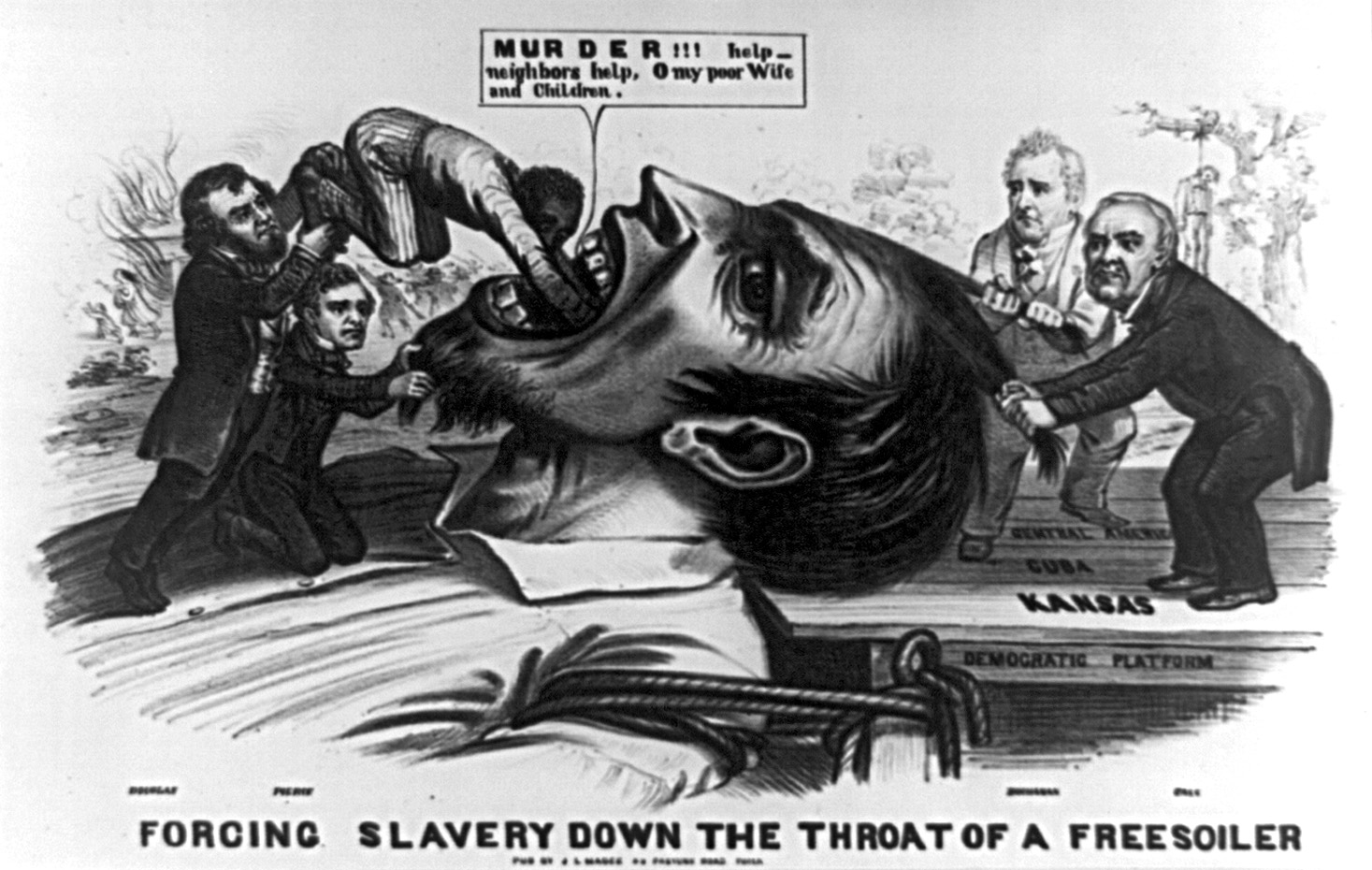 "Much later, however, Northern antislavery forces would stalwartly defend the 36 30' line of division, and proslavery forces would fight to repeal this crucial part of the Missouri compromise, which was accomplished by the Kansas-Nebraska Act of 1854 and the Dred Scott decision of 1857, which denied Congress any power to restrict slavery in any of the national territories."
"Much later, however, Northern antislavery forces would stalwartly defend the 36 30' line of division, and proslavery forces would fight to repeal this crucial part of the Missouri compromise, which was accomplished by the Kansas-Nebraska Act of 1854 and the Dred Scott decision of 1857, which denied Congress any power to restrict slavery in any of the national territories."David Brion Davis, Inhuman Bondage: The Rise and Fall of Slavery in the New World(New York: Oxford University Press, 2006), 278.
Más sobre 1854-Kansas-Nebraska Act
24: 1857 --Dred Scott Decision
“In response to the Dred Scott decision of 1857, both theSouth and President Buchanan were jubilant. Despite vigorous dissenting opinions from Justices JohnMcLean and Benjamin R. Curtis, the highest court in the land had that excludingslavery from the territories –the issue that had divided the nation in theMissouri Crisis of 1819-21 and the goal that had brought the Republican partyinto existence-was unconstitutional.”
David Brion Davis, InhumanBondage: The Rise and Fall of Slavery in the New World (New York: OxfordUniversity Press, 2006), 287.
Más sobre 1857 --Dred Scott Decision
25: 1858 - Lincoln-Douglas Debates
 "The Lincoln-Douglas contest was unprecedented in both form and substance...Lincoln and Douglas agreed to participate in seven face-to-face debates, which are rightly regarded as classics in the history of campaign oratory. Douglas tried to make the most of his experience as a seasoned national leader [...] and to portray his opponent as a dangerous radical...Lincoln searched for ways to counteract the image of a revolutionary and 'nigger lover.' Always insisting on the moral and political wrong of slavery, he repeated acknowledged that the federal government could not interfere with slavery in the existing states...The election in Illinois was extremely close. The Republicans did not win enough seats in the legislature to send Lincoln to Senate, but the campaign immediately elevated him to national prominence."
"The Lincoln-Douglas contest was unprecedented in both form and substance...Lincoln and Douglas agreed to participate in seven face-to-face debates, which are rightly regarded as classics in the history of campaign oratory. Douglas tried to make the most of his experience as a seasoned national leader [...] and to portray his opponent as a dangerous radical...Lincoln searched for ways to counteract the image of a revolutionary and 'nigger lover.' Always insisting on the moral and political wrong of slavery, he repeated acknowledged that the federal government could not interfere with slavery in the existing states...The election in Illinois was extremely close. The Republicans did not win enough seats in the legislature to send Lincoln to Senate, but the campaign immediately elevated him to national prominence."
The Dickinson College House Divided educational website employs interactive tools to give a detailed look into the Lincoln-Douglas Debates of 1858.
Más sobre 1858 - Lincoln-Douglas Debates
26: 1859-John Brown's Raid on Harpers Ferry, Virginia
 "On the night of October 16, 1859, [John Brown] and twenty-one heavily armed white and black followers seized part of the federal arsenal at Harpers Ferry, Virgiania...After Resisting federal troops for two days, Brown surrendered; he was tried for conspiracy, treason, and murder and was hanged.
"On the night of October 16, 1859, [John Brown] and twenty-one heavily armed white and black followers seized part of the federal arsenal at Harpers Ferry, Virgiania...After Resisting federal troops for two days, Brown surrendered; he was tried for conspiracy, treason, and murder and was hanged.
David Brion Davis, Inhuman Bondage: The Rise and Fall of Slavery in the New World(New York: Oxford University Press, 2006), 291-292.
Image Credit:"John Brown" photo by Black and Batcheldor, courtesy of http://upload.wikimedia.org/wikipedia/en/thumb/e/e4/John_brown_1859.jpg/421px-John_brown_1859.jpg
Más sobre 1859-John Brown's Raid on Harpers Ferry, Virginia
27: 1860 --Abraham Lincoln elected President
“The election had proved that the north was populous enough to bestownational power on a minority party that had no support in the South. The Republican Party was committed tofree-labor ideology and the proposition that slavery was morally wrong.”
David Brion Davis, InhumanBondage: The Rise and Fall of Slavery in the New World (New York: OxfordUniversity Press, 2006), 294.
Más sobre 1860 --Abraham Lincoln elected President
28: 1862-Battle of Antietam
 miracle had a decisive effect on the Battle of Antietam, which repelled Lee's invasion and probably prevented a kind of European intervention that would have perpetuated American slavery for an indefinite period."
miracle had a decisive effect on the Battle of Antietam, which repelled Lee's invasion and probably prevented a kind of European intervention that would have perpetuated American slavery for an indefinite period."David Brion Davis, Inhuman Bondage: The Rise and Fall of Slavery in the New World(New York: Oxford University Press, 2006), 316.
Major General Ambrose Burnside describes the battle and the days leading up to it in his after action report
Más sobre 1862-Battle of Antietam
29: 1863 --Emancipation Proclamation
“The Commander-in-chief of the Army and Navy declared that on the firstday of January 1862 `all persons held as slaves within any states or states,wherein the constitutional authority of the United States shall not then bepractically recognized, submitted to, and maintained, shall then,thenceforward, and forever, be free.’”
David Brion Davis, InhumanBondage: The Rise and Fall of Slavery in the New World (New York: OxfordUniversity Press, 2006), 314.
Más sobre 1863 --Emancipation Proclamation
30: 1873-76 - Puerto Rico Frees Slaves
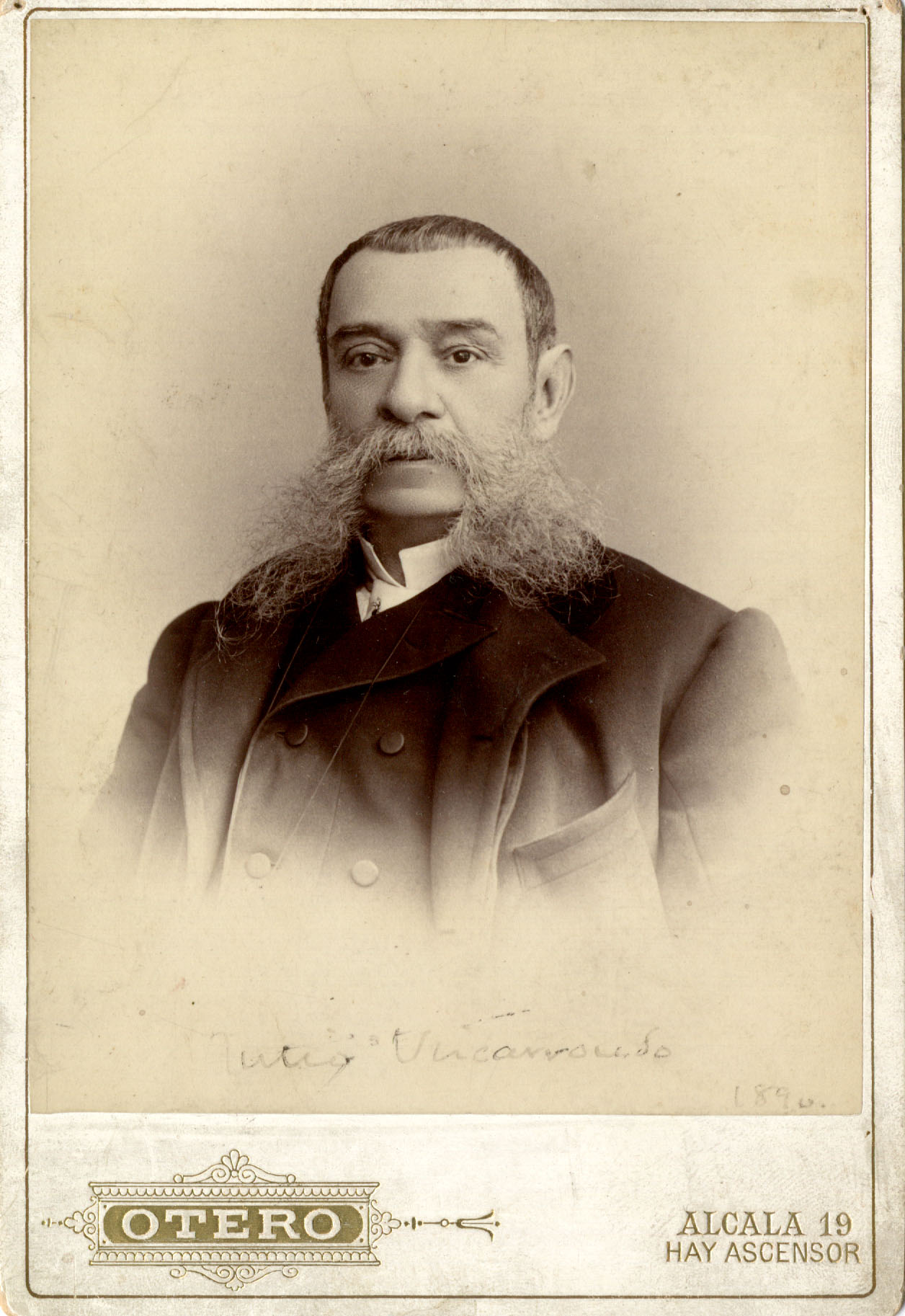 "Cuba, along with Puerto Rico, remained the last fragment of Spain's once great New World empire...In Spain, Julio Vizcarrondo and other resident Puerto Ricans launched a small but genuine abolitionist movement late in 1864. In 1868 a liberal revolution in Spain coincided with an armed rebellion in eastern Cuba...If the rebellion initially failed, it involved the arming and freeing of many blacks on both the Spanish and rebel sides...Puerto Rico ended slavery in 1873 and a form of apprenticeship in 1876...Spain abolished all colonial slavery in 1886."
"Cuba, along with Puerto Rico, remained the last fragment of Spain's once great New World empire...In Spain, Julio Vizcarrondo and other resident Puerto Ricans launched a small but genuine abolitionist movement late in 1864. In 1868 a liberal revolution in Spain coincided with an armed rebellion in eastern Cuba...If the rebellion initially failed, it involved the arming and freeing of many blacks on both the Spanish and rebel sides...Puerto Rico ended slavery in 1873 and a form of apprenticeship in 1876...Spain abolished all colonial slavery in 1886."
Más sobre 1873-76 - Puerto Rico Frees Slaves
31: 1888 --Legal emancipation of slaves in Brazil
“When Brazil finally enacted immediate, uncompensated emancipation onMay 13, 1888, there were days of public celebration of a kind not seen in theUnited States-music, parades, flowers, banners, pageants, and a solemn Catholicmass attended by Princess Regent Isabel and members of the government. Oddly enough, this royal sanction forslave emancipation enabled angry planters to join groups that had other reasonsfor staging a military coup d’ etat and overthrowing the monarchic government.”
David Brion Davis, InhumanBondage: The Rise and Fall of Slavery in the New World (New York: OxfordUniversity Press, 2006), 327.
Más sobre 1888 --Legal emancipation of slaves in Brazil